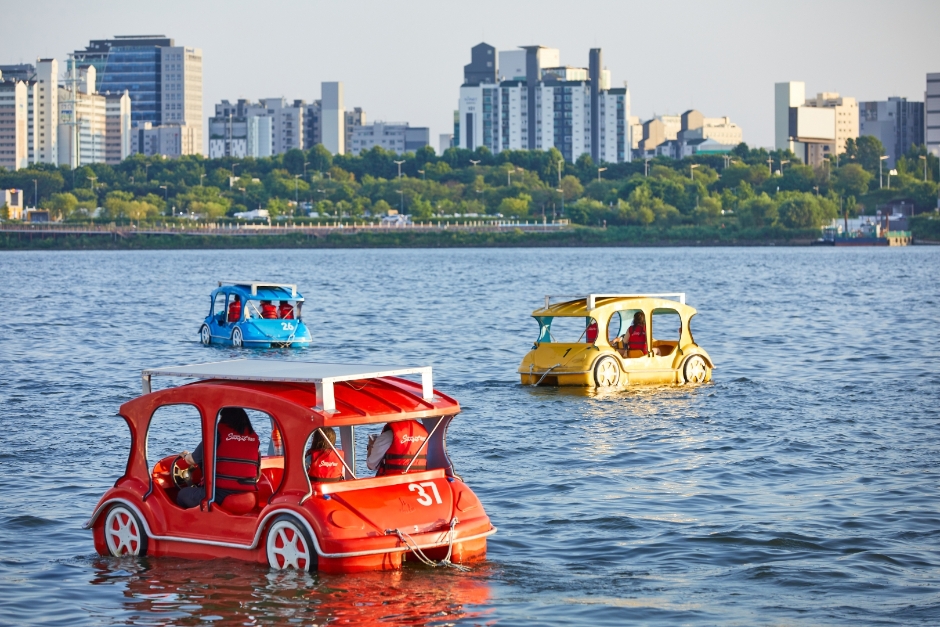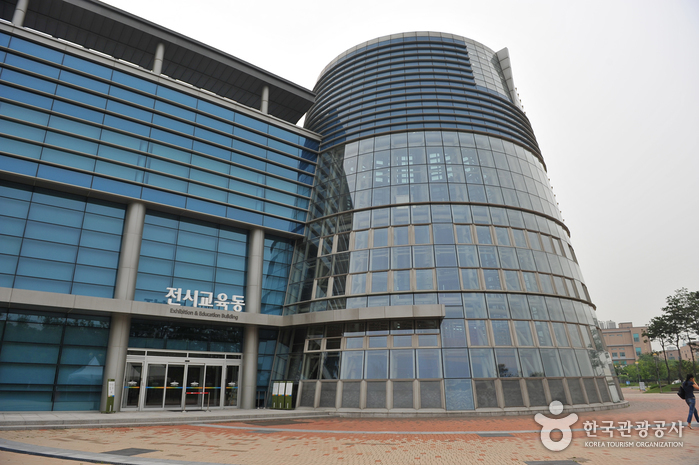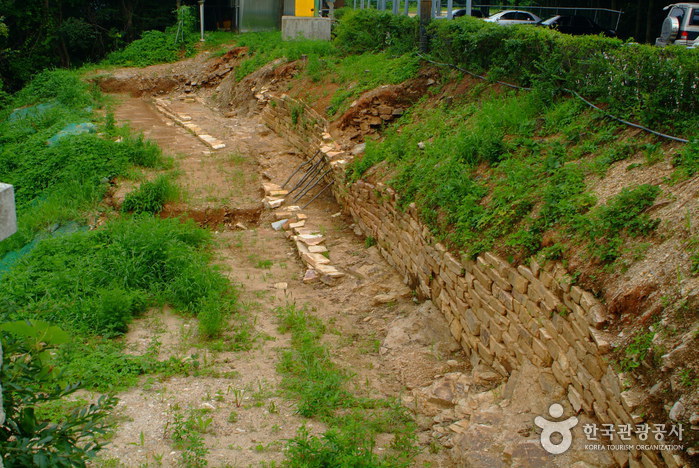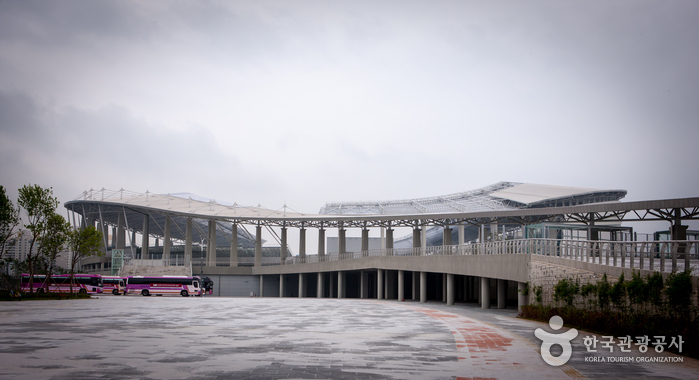Jingwansa Temple (Seoul) [진관사(서울)]
15.2Km 2025-06-30
73 Jingwan-gil, Eunpyeong-gu, Seoul
Jingwansa Temple is one of the four Buddhist temples that surround Seoul. It was known as the center of Buddhism and academics. Jingwansa Temple is home to a variety of buildings, such as Daeungjeon Hall, Myeongbujeon Hall, and Nahanjeon Hall, all surrounded by the beautiful nature of Bukhansan Mountain. In fact, the temple complex is a popular fall destination for its fall colors. Visitors can also visit the nearby Eunpyeong Hanok Village.
Hotel De Urban (드어반관광호텔)
15.3Km 2021-01-12
35, Gomdallae-ro 24-gil, Gangseo-gu, Seoul
+82-2-2602-6393
Hotel De Urban is a tourist hotel in Kkachisan, Gangseo-gu in Seoul. It is located near Gimpo International Airport, making it convenient for tourists arriving at Gimpo by plane. The hotel is designed to offer a relaxing atmosphere with a modern touch, and provides a friendly service.
Shinman Co.,Ltd[Korea Quality]/주식회사 신만 [한국관광 품질인증]
15.4Km 2024-08-27
83 Bangullae-ro, Mapo-gu, Seoul
+82-2-373-8880
Shinman Co.,Ltd is a red ginseng store in Mangwon-Dong, Seoul. The store sells fresh, steamed and dried red ginseng; fresh ginseng lightly boiled in water; dried Taegeuk ginseng; and processed red ginseng products. It’s open 24/7 and staff speak foreign languages including English, Chinese, Malay, and Cantonese.
Sunset Leisure 435 (썬셋레저 435)
15.4Km 2023-07-04
서울특별시 마포구 망원동 205-5
Mangwon Hangang Park is famous for its amenities, and what better than the iconic duck boat to get the most out of Hangang River? Hangang River is a wide river ranging up to 1 - 2km in x_width, so go for a joyride with duck boats on the river. One can also opt for electric boats for a more comfortable experience, depending on one’s preferences and the group size. Duck boats are particularly popular on the weekends and holidays, so it is recommended to place reservations before heading there.
National Institute of Biological Resources (국립생물자원관)
15.4Km 2023-04-13
42, Hwangyeong-ro, Seo-gu, Incheon
+82-32-590-7000
Opened in October 2007, the National Institute of Biological Resources is the largest collection preservation facility in Northeast Asia. The institute collects, preserves, manages, and conducts research on biological resources with the aim of growing into a focal biological resource hub of Northeast Asia. The institute is comprised of a spine-shaped collections and research center and a leaf-shaped exhibition and education center. The exhibition hall has 3,905 specimens of 1,287 native species on display. Korea's diverse ecosystems are recreated as highly detailed dioramas at the exhibition hall. A small restaurant is located inside the research center, and the extensive grass field in front of the institute provides an ideal picnic spot.
Olive Young - Bucheon Homeplus Yeowol Branch [Tax Refund Shop] (올리브영 홈플러스부천여월)
15.6Km 2024-04-18
1F, 663, Sosa-ro, Bucheon-si, Gyeonggi-do
-
Homeplus - Bucheon Yeowol Branch [Tax Refund Shop] (홈플러스 부천여월)
15.6Km 2024-04-23
663, Sosa-ro, Bucheon-si, Gyeonggi-do
-
Himart - Ojeong Branch [Tax Refund Shop] (하이마트 오정점)
15.6Km 2024-04-18
672, Sosa-ro, Bucheon-si, Gyeonggi-do
-
Odusanseong Fortress (파주 오두산성)
15.7Km 2024-12-03
Seongdong-ri, Paju-si, Gyeonggi-do
Odusanseong Fortress is built around the strategic summit of Odusasn Mountain. The walls stretch across roughly 620 meters and were built during the Baekje dynasty. The fortress is built on the intersection of the Imjingang River and the Hangang River on the summit of Odusan Mountain (119 meters). The mountain’s slope is steep and stones used in the construction of the fortress walls are scattered here and there at the summit. These scattered stones are evidence that the fortress underwent repairs several times during the Samguk (Three Kingdoms) era and the Joseon dynasty, as these stones were evidently quarried and used to mend the fortress walls. Excavations have discovered a great deal of earthenware, white porcelain, tile, and iron arrowheads. Topographically, the fortress sits on a prime strategic junction and the Unification Observatory has been situated there as well. The fortress stands as an important object of study concerning fortifications and structures from the Baekje dynasty. It has been recorded on the stele of King Gwanggaeto, Samguksagi (History of the Three Kingdoms), in the Naekjebongi (Baekje Annals) and on Daedongyeojido (Map of Korea) that the fortress was the Gwanmi Fortress of Baekje, attracting many scholars and researchers interested in this period.
Incheon Asiad Main Stadium (인천아시아드주경기장)
15.7Km 2025-06-09
806 Bongsu-daero, Seo-gu, Incheon
+82-32-456-2100
Incheon Asiad Main Stadium is the main stadium used for the 2014 Asian Games in Incheon. Construction began in June 2011 and the stadium opened on June 1, 2014. Built on a 631,975 ㎡ lot, the five-story stadium has a total floor area of 113,620 ㎡ and 61,818 spectator seats (capacity to be reduced by 32,514 seats after the 2014 Asian Games).
The stadium has an oval running track enclosing a regulation-size soccer field. Outside, there's a tennis court, a subsidiary stadium, and the 1,415.13 ㎡ Yeonhui Cricket Ground.



![Olive Young - Bucheon Homeplus Yeowol Branch [Tax Refund Shop] (올리브영 홈플러스부천여월)](http://tong.visitkorea.or.kr/cms/resource/75/2888775_image2_1.jpg)
![Homeplus - Bucheon Yeowol Branch [Tax Refund Shop] (홈플러스 부천여월)](http://tong.visitkorea.or.kr/cms/resource/68/2889168_image2_1.jpg)
![Himart - Ojeong Branch [Tax Refund Shop] (하이마트 오정점)](http://tong.visitkorea.or.kr/cms/resource/81/2889981_image2_1.jpg)


 English
English
 한국어
한국어 日本語
日本語 中文(简体)
中文(简体) Deutsch
Deutsch Français
Français Español
Español Русский
Русский